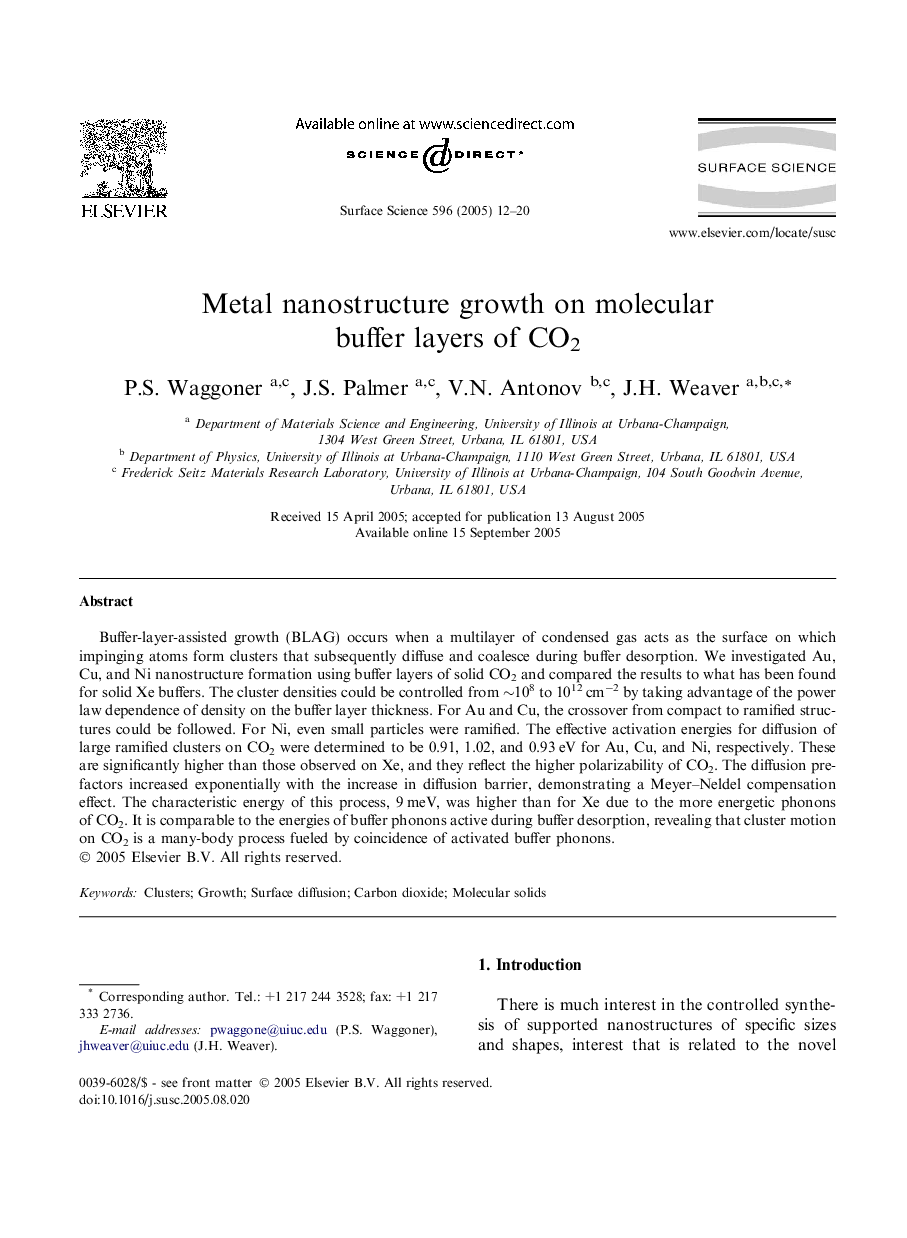| Article ID | Journal | Published Year | Pages | File Type |
|---|---|---|---|---|
| 9594472 | Surface Science | 2005 | 9 Pages |
Abstract
Buffer-layer-assisted growth (BLAG) occurs when a multilayer of condensed gas acts as the surface on which impinging atoms form clusters that subsequently diffuse and coalesce during buffer desorption. We investigated Au, Cu, and Ni nanostructure formation using buffer layers of solid CO2 and compared the results to what has been found for solid Xe buffers. The cluster densities could be controlled from â¼108 to 1012Â cmâ2 by taking advantage of the power law dependence of density on the buffer layer thickness. For Au and Cu, the crossover from compact to ramified structures could be followed. For Ni, even small particles were ramified. The effective activation energies for diffusion of large ramified clusters on CO2 were determined to be 0.91, 1.02, and 0.93Â eV for Au, Cu, and Ni, respectively. These are significantly higher than those observed on Xe, and they reflect the higher polarizability of CO2. The diffusion pre-factors increased exponentially with the increase in diffusion barrier, demonstrating a Meyer-Neldel compensation effect. The characteristic energy of this process, 9Â meV, was higher than for Xe due to the more energetic phonons of CO2. It is comparable to the energies of buffer phonons active during buffer desorption, revealing that cluster motion on CO2 is a many-body process fueled by coincidence of activated buffer phonons.
Related Topics
Physical Sciences and Engineering
Chemistry
Physical and Theoretical Chemistry
Authors
P.S. Waggoner, J.S. Palmer, V.N. Antonov, J.H. Weaver,
